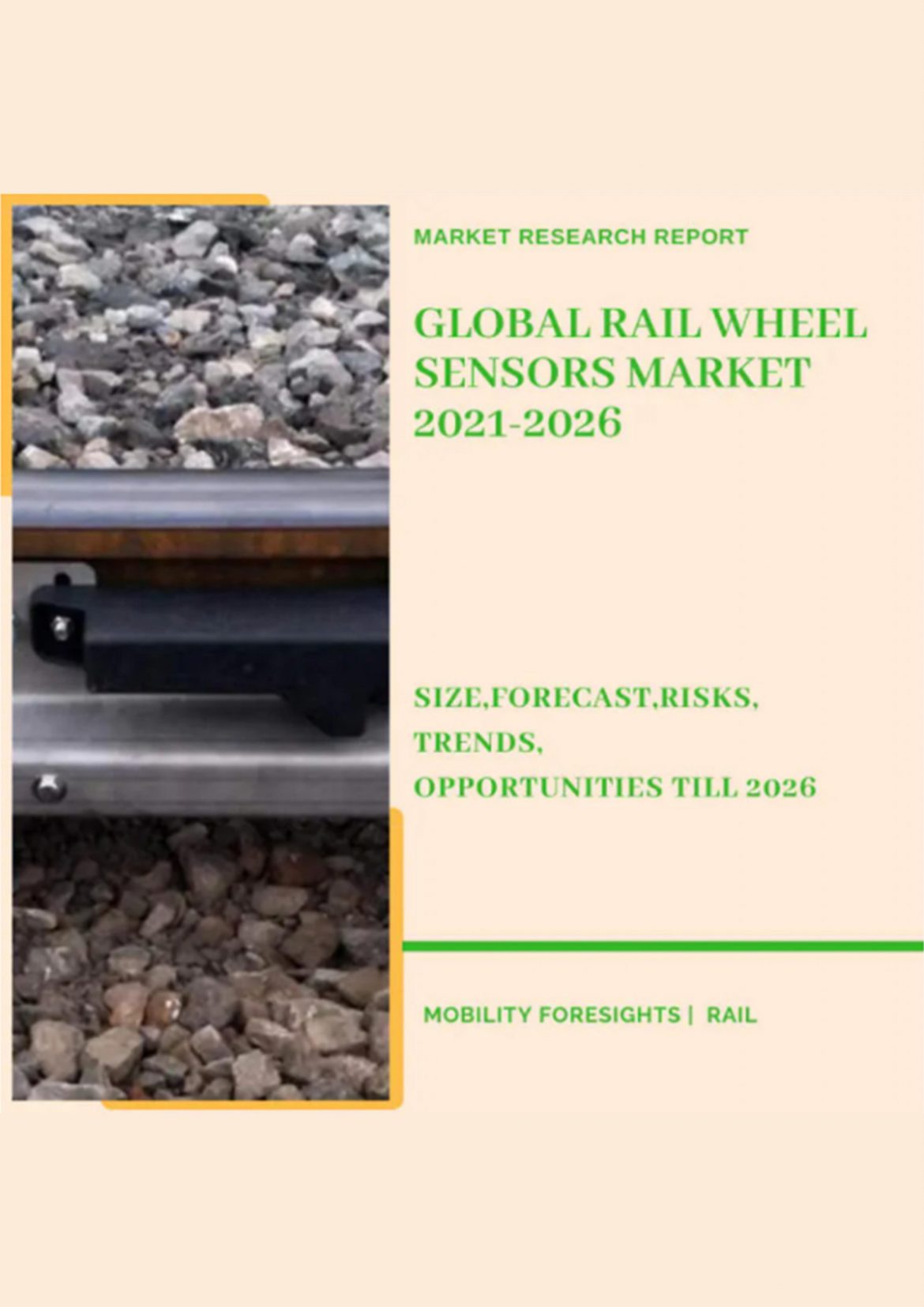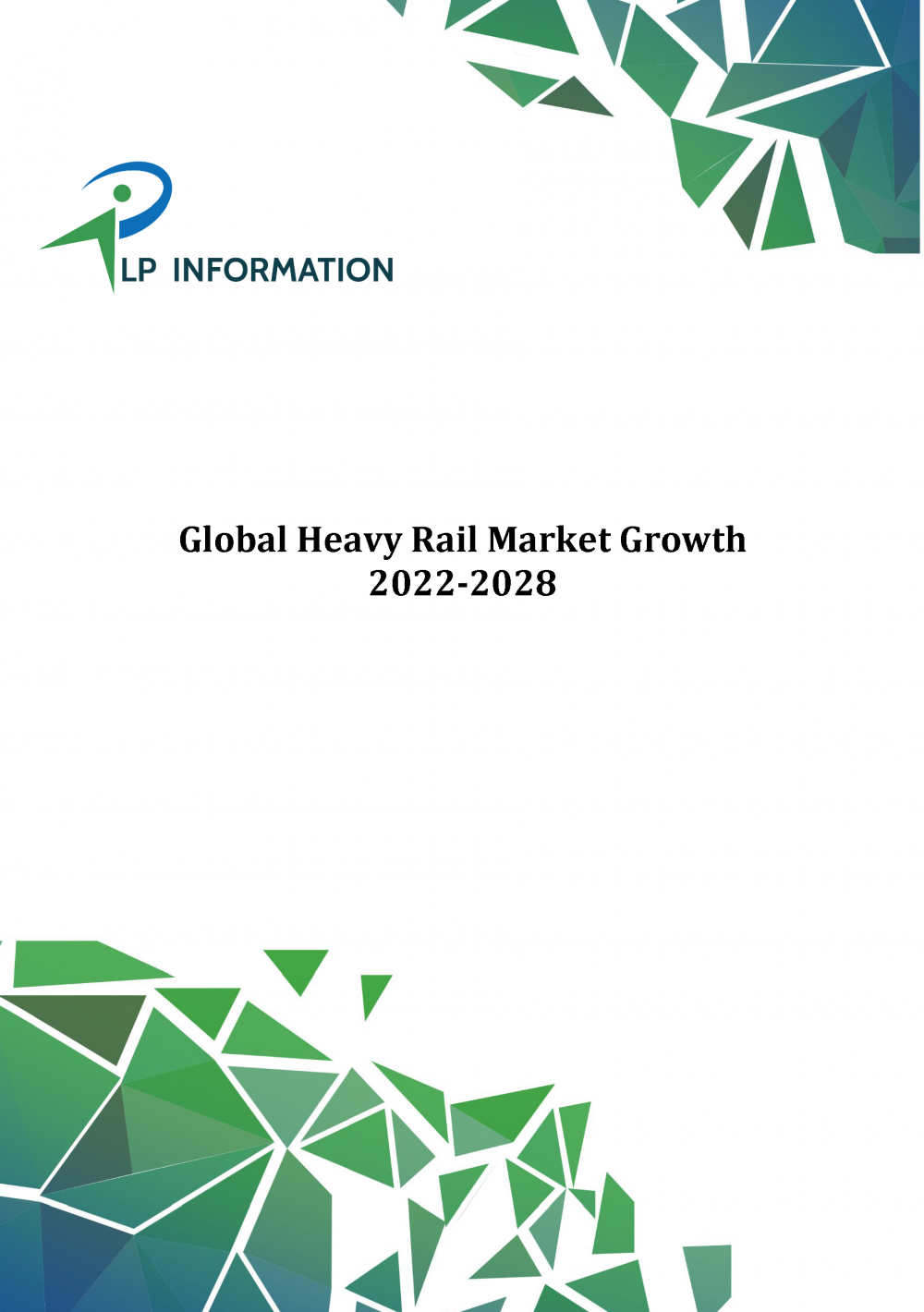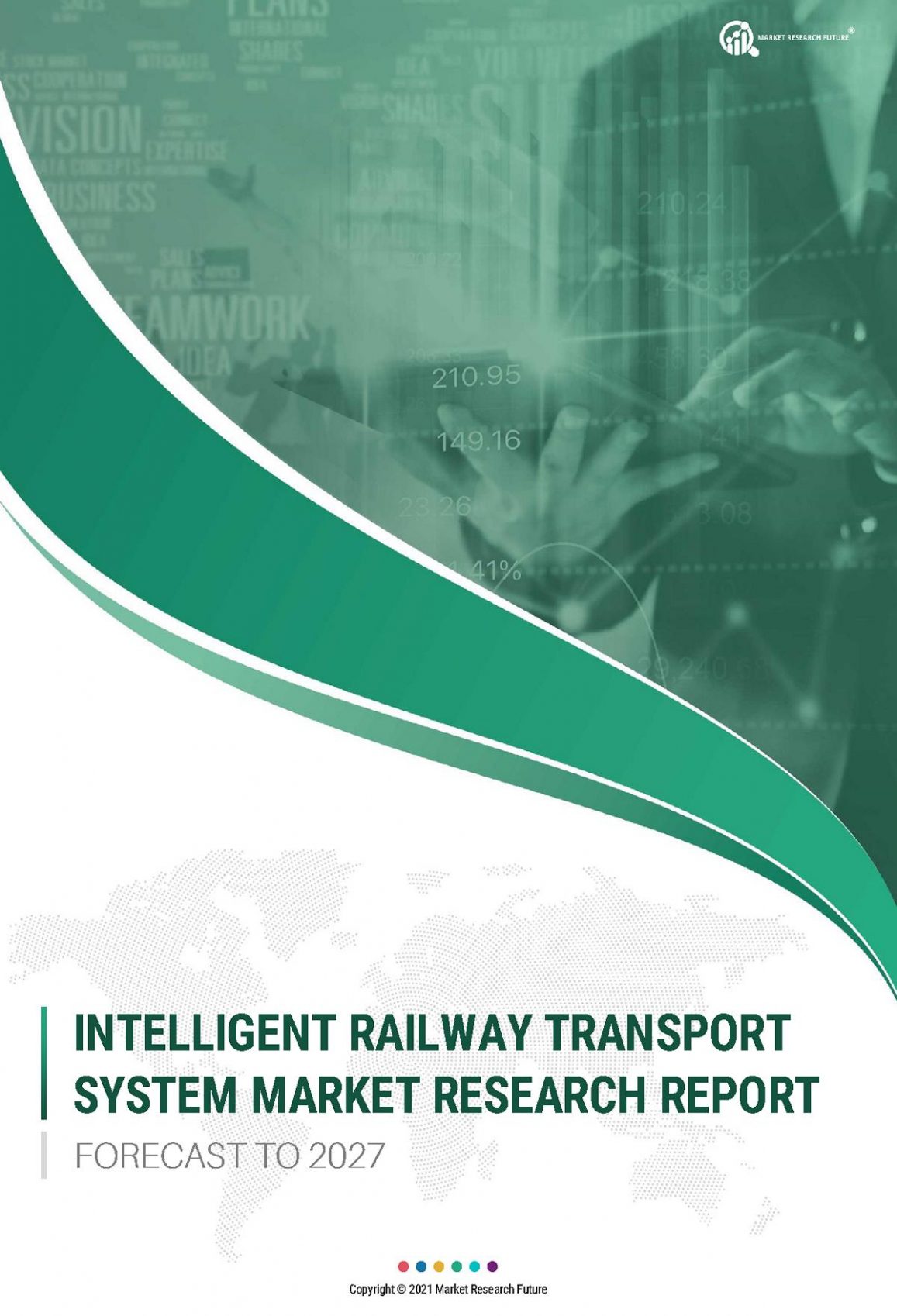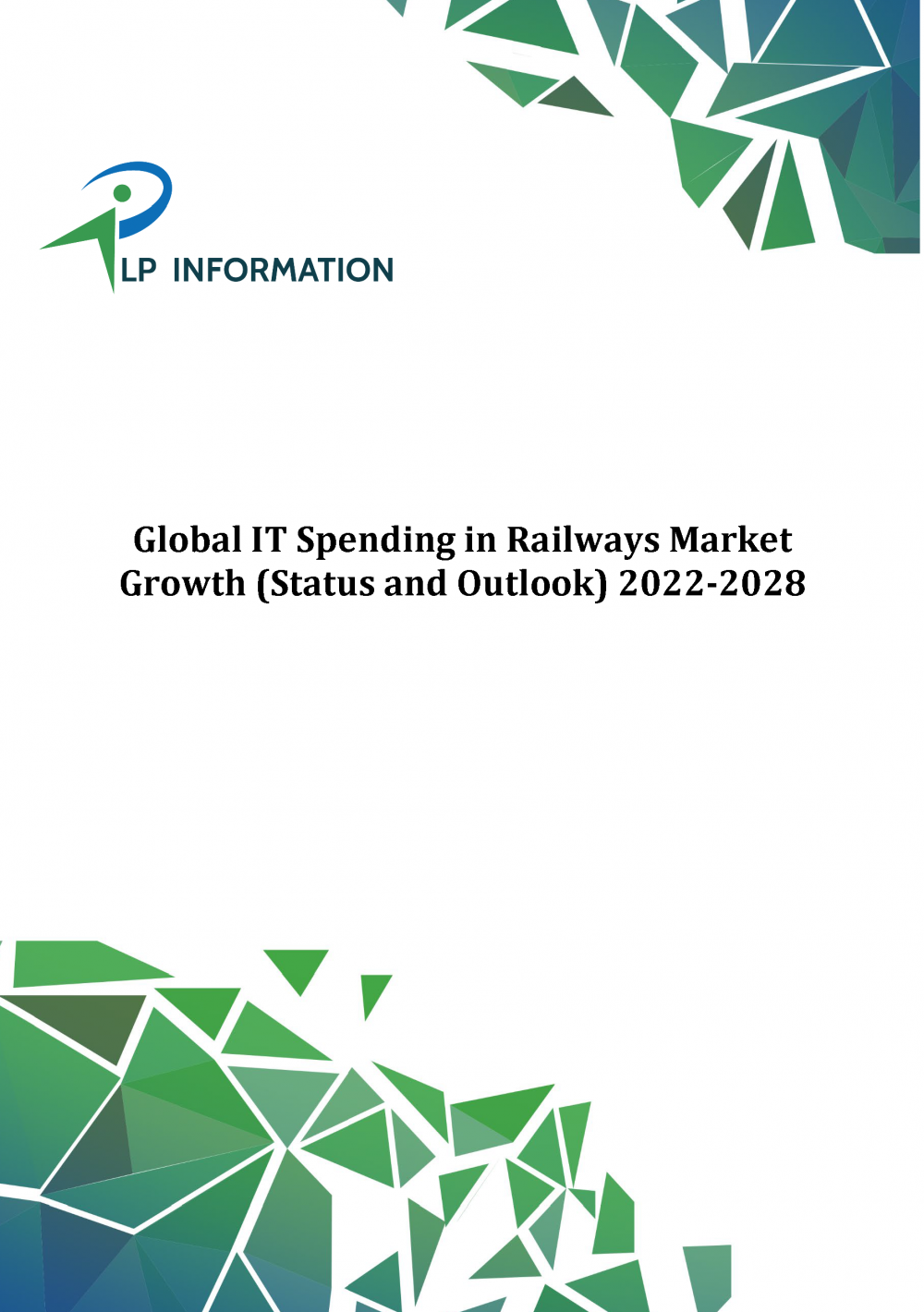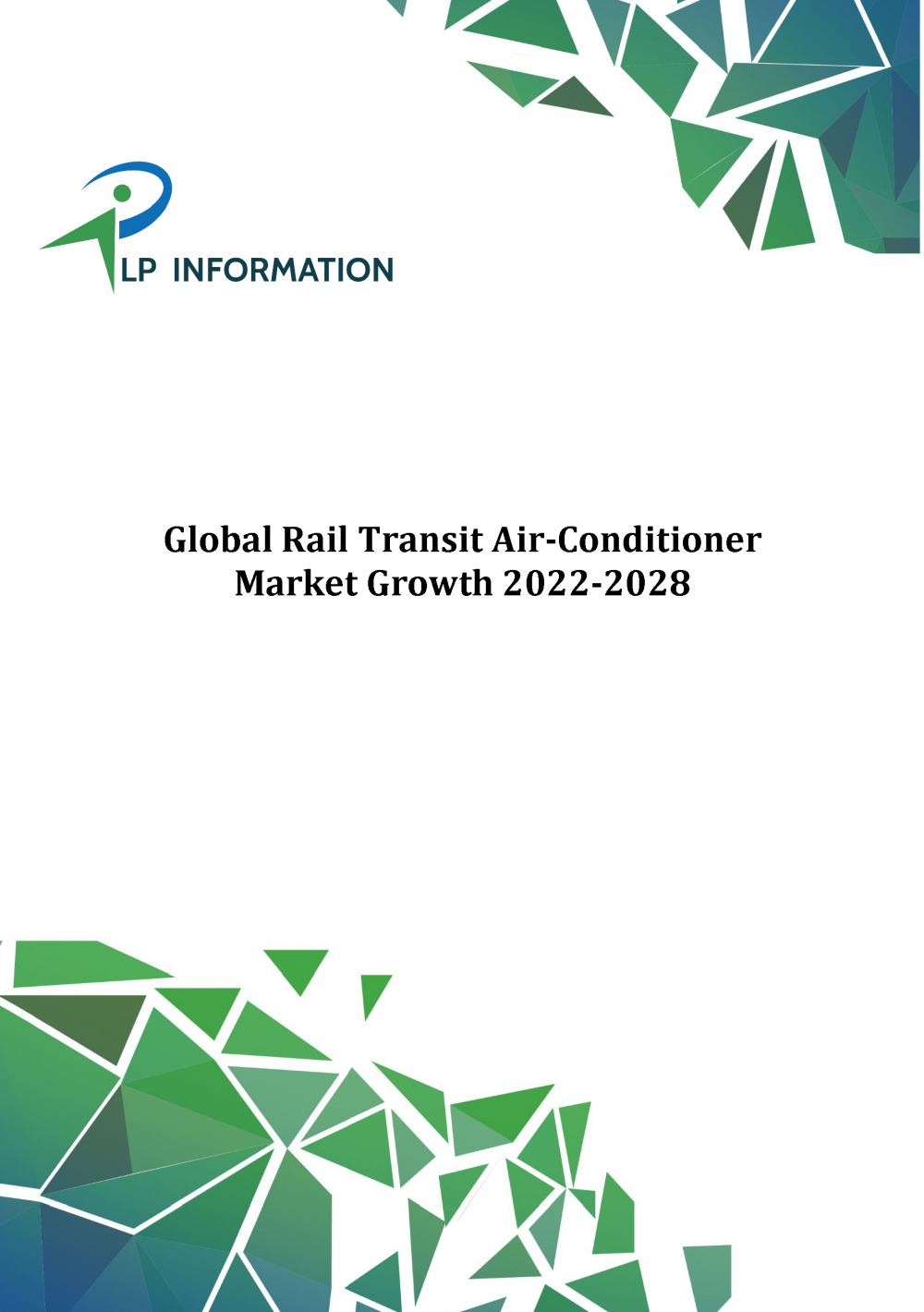Description
INTRODUCTION – Global Rail Wheel Sensors Market 2021-2026
Rolling and sliding are involved in rail-wheel interaction; the contact surface between the two elements fluctuates from one position to another, resulting in a sinuous movement on the horizontal plane with dynamic load on the rail owing to centrifugal force or rolling stock movement.
So far, studies have shown that the combination of rolling contact, tiredness, and wear is the most harmful consequence. Because of the change in rail radius and increased traction, the point of contact is migrating to the gauge corner.
Without adequate maintenance, the rail profile changes, resulting in increased rail-wheel contact forces and, as a result, more damage propagation.
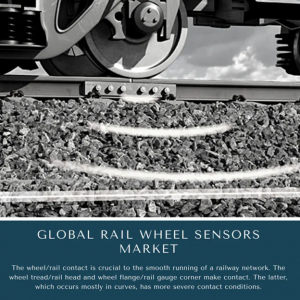
Railway wheel tread flat is one of the most common flaws in railway wheels, posing a significant risk to vehicle safety.
A novel wheel flat detection system based on a self-made reflecting optical position sensor was created to detect wheel flats dynamically and quantitatively when trains are moving at high speeds.
With the advancement of railway transportation toward faster speeds and heavier axle loads, the wheel-rail contact force grows, putting higher quality demands on the wheels.
Wheel flats are the most prevalent local surface fault in railway wheels over their service life.
Condition monitoring systems are frequently used to examine the health of equipment. Data capture is a critical component of any condition monitoring system.
Estimating the current state and projecting future behavior of the equipment are heavily reliant on the data measurement stage’s characteristics.
Nowadays, condition monitoring has a wide range of applications in the railway sector, and many monitoring systems for inspecting wheel and rail conditions have been presented.
In-service condition monitoring of wheels gives real-time data for maintenance planning, whereas in-workshop examination is typically performed at set intervals.
GLOBAL RAIL WHEEL SENSORS MARKET DEVELOPMENTS AND INNOVATIONS
| S No | Overview of Development | Development Detailing | Region of Development | Possible Future Outcomes | |
| 1 | Railways plan to scout globally for advanced train wheel sensors at an estimated cost of Rs 113 crore | Billed as ‘black box’ for train operations, railways will introduce the long-awaited sensor-based on-board condition monitoring system for timely detection of defects related to passenger coaches, wagons, locomotives, and tracks. Railways will float the global tender soon to introduce sensor-based monitoring system | India | Possible Technological Advancements in Railways Systems | |
GLOBAL RAIL WHEEL SENSORS MARKET DYNAMICS
The wheel/rail contact is crucial to the smooth running of a railway network. The wheel tread/rail head and wheel flange/rail gauge corner make contact.
The latter, which occurs mostly in curves, has more severe contact conditions. Because the contact is tiny and supports huge loads, substantial contact stresses are created.
These, in conjunction with contact slip, are principally responsible for driving the processes that result in wheel and rail damage, whether through deformation, wear, or a fatigue process. Multi-body dynamics software may be used to anticipate the wheel/rail interaction characteristics.

Rising urbanisation in developing countries has put a pressure on the existing road, rail, and aviation infrastructure. This has also led to the building of infrastructure for metro-to-suburban connection.
Population expansion in these areas is pushing increased demand for rolling stock as well as supporting infrastructure such as maintenance and services. The need for intra-city mobility solutions is expected to rise as a result of urbanisation.
This market’s rise is due to reasons such as worldwide population expansion along with urbanisation, an increased desire for cleaner and quicker forms of transportation, and economic growth.
Smart railway stations have sprouted up in several developing countries in recent years. Various governments want to improve their rail transportation centers in order to make their railway stations smarter.
In Spain, the International Union of Railways (UIC) and ADIF, the Spanish rail infrastructure management, have joined forces to realise the objective of Smart Stations in Smart Cities.
Furthermore, governments in major cities are focusing heavily on encouraging the development of large-scale public transportation infrastructure, like bullet trains and high-speed trains, to make public transportation more efficient. All of these variables are projected to contribute to growth.
Increasing technical improvements in railway networks and trains, as well as the trend of autonomous technology, are forcing train makers to invest large sums in R&D for the production of light materials for freight trains, passenger trains, and short-distance trains.
Cutting-edge rail network technologies, such as the incorporation of 5G networks and sensor-based traction technology. As a result, the railway sector is prioritising remote monitoring operations, which will increase demand for rail wheel sensors.
A growing number of railway projects, metro projects, and other railway infrastructure projects are expected to drive growth.
In Spain, the Frauscher Wheel Sensor RSR123 is used in a variety of applications that demonstrate its versatility by delivering solutions that address the issues faced by various market segments.
The RSR123 has been used in a variety of projects, including high-speed lines with a top speed of 300 km/h, urban transportation applications like the tram in Barcelona, three-rail projects like the Mediterranean Corridor’s “Castellbisbal – Tarragona” line, and even to trigger hot box detection systems.
Frauscher offers railway operators a single axle counting solution that can communicate with a variety of interlocking systems and adhere to both customer-specific and standard communication protocols, such as EULYNX.
Additionally, the Frauscher Safe Ethernet FSE continuously demonstrates its value to integrators by providing system integration without the need for proprietary software protocols. These advantages have resulted in a number of successful projects with integrators and operators in Spain and throughout the world.
GLOBAL RAIL WHEEL SENSORS MARKET SEGMENTATION
The Global Rail Wheel Sensors Market can be segmented into following categories for further analysis.
By Rail Technology
-
- Single Wheel Sensors
- Dual Wheel Sensors
By Product Classification Usage
-
- Urban Rail transportation
- Freight Rail Transportation
- Railway Transport Line Analysis
By Combination of Application
-
- Vision Monitoring
- Track Side Lubrication Monitoring
- Hot Box and Wheel Flat Detection
- Axle Spacing and Wheel Arrangement Detection
- Speed Analysis Measurement
By Construction
-
- New Placement
- Upgradation
- Maintenance and Repair
By Regional Classification
-
- Asia Pacific Region – APAC
- Middle East and Gulf Region
- Africa Region
- North America Region
- Europe Region
- Latin America and Caribbean Region
RECENT TECHNOLOGICAL TRENDS IN GLOBAL RAIL WHEEL SENSORS MARKET
Almost all commercial electronic train wheel detectors are built on RLC circuits that are placed next to the rail and set to a specific frequency.
When a train passes over the detector, the impedance varies owing to fluctuations in magnetic permeability and flux density caused by the train’s wheel.
This results in detectable fluctuations in the current across the RLC circuit. Other methods suggest a failsafe wheel train detector that use two coils as emitter and receiver. The detector detects the wheels as changes in the magnetic coupling between the coils on each side of the rail.
An optical sensor is a device that transforms light beams into electrical impulses. It may be employed as a smart condition monitoring system in a variety of fields, including civil, mechanical, electrical, and biological, enabling real-time and continuous monitoring.
Many railway data, such as wagon weight, steady speed, and train direction, may be recorded and monitored in real time using an optical sensor.
Another significant feature is rail and wheel health monitoring, which is accomplished through the use of sensors that continuously record strain, vibration, temperature, and acceleration.
An electromagnetic field is created around an adjacent region when an alternating current is applied to an induction wire. When a conductive metal is brought into contact with this electromagnetic field, a current is created in the conducting metal.
The induced current focused potential drop approach is based on assessing the potential drop associated with this type of generated current.
This approach was used to identify surface and sub-surface fractures after many artificial railway wheel flaws were applied. Detecting fatigue damage in the wheel is difficult because of its depth, and monitoring fatigue damage in the wheel is critical due to its sudden fraction.
RAIL WHEEL SENSORS MARKET COMPETITIVE LANDSCAPE
Railway operators, owners, and maintainers want to know about the current state of trains and infrastructure. Unexpected breakdown of crucial components like wheels interrupts regular operations and, in the worst-case scenario, results in derailment.
As a result, in-service monitoring of wheels has received a lot of attention in recent decades. Wheel in-service monitoring is divided into two categories: on-board and roadside measures. Aboard-board measurement refers to techniques of installing sensors on the train.
Frauscher is one of the leading developers of the Rail wheel sensors based on various application requirements in the European Market. The RSR180 combines time-tested technology and decades of experience.
It was the first wheel sensor and has been under continuous development for more than 30 years. Today, its applications span from open lines to grooved rails all throughout the world.
The RSR123 combines multiple inductive processes and is based on the proprietary V.Mix Technology. As a result, the Frauscher Wheel Sensor is very resistant to electromagnetic interferences such as eddy current brakes or rail currents.
The RSR123 comes with a sensor cable that plugs into the RSR123. The adjustment of the sensor is carried out automatically by the interior equipment. It has a great resistance to electromagnetic interference.
Baumer is part of the manufacturing segment involved in sensor technologies, wherein the slide control, slip regulation, and train control systems such as the European train control system (ETCS) all contribute considerably to rail safety.
Angle and rpm must be measured at several spots throughout the drive system and undercarriage bogie to do this. The BMIV multiple channel encoder, designed specifically for use in bogies, has exceptional performance characteristics.
Sensors that employ the Hall principle to scan ferromagnetic toothed wheels are also suited for use in rail vehicles. The contactless MTRM 16 Hall sensor performs duties such as speed acquisition for slide control, speed regulation, and rotation direction determination.
Honeywell Micro Switch Based High-Speed Rail wheel Proximity Sensors provide a more reliable strategy for detecting the presence of trains.
Because track circuits can be compromised by leaves, salt, dust, dirt, or rust, the Honeywell solution works independently from track circuits delivering huge savings in track maintenance costs while vastly improving reliability.
If you’re relying on vigilantly maintained track circuits to detect the presence of trains, Honeywell Rail wheel Proximity Sensors will get you off the maintenance track and put you on the right track.
With ten years of proven success in Europe, the 926FS30 Series is built on electromagnetic technology that consistently outperforms competitive products in field and operational tests.


